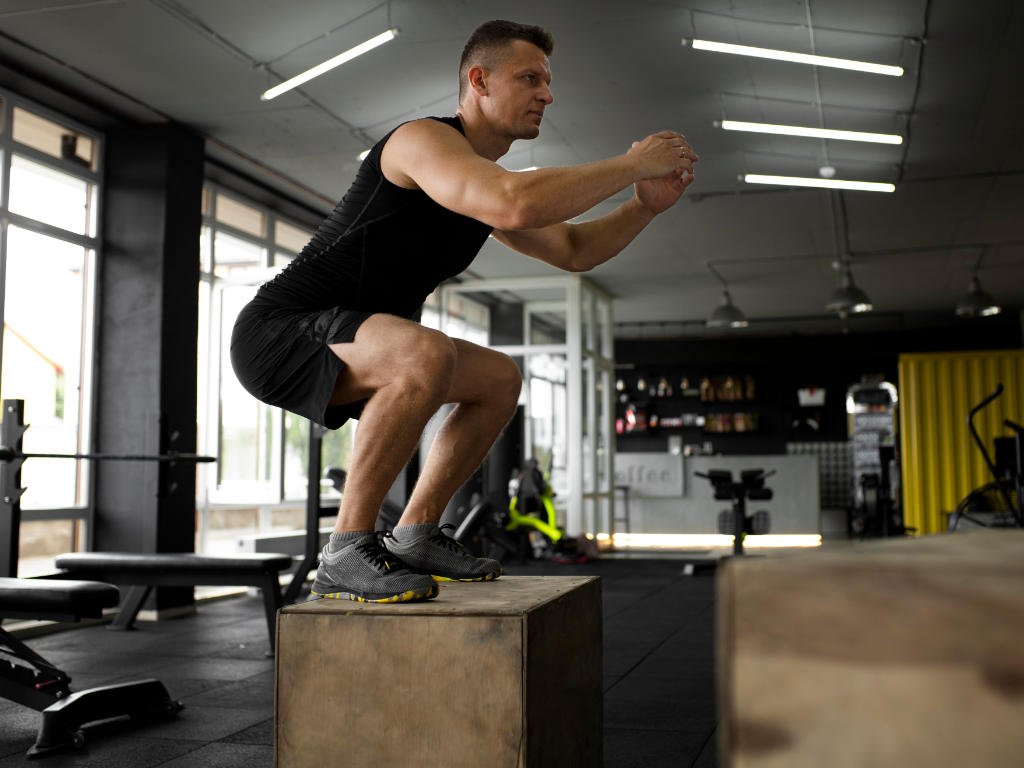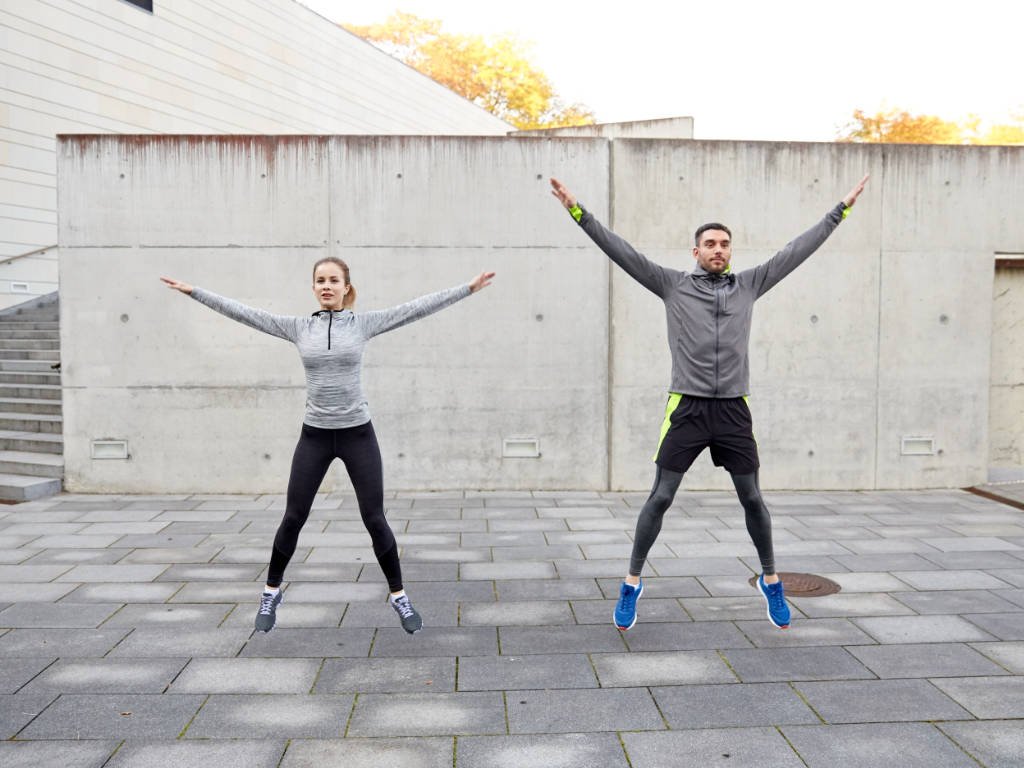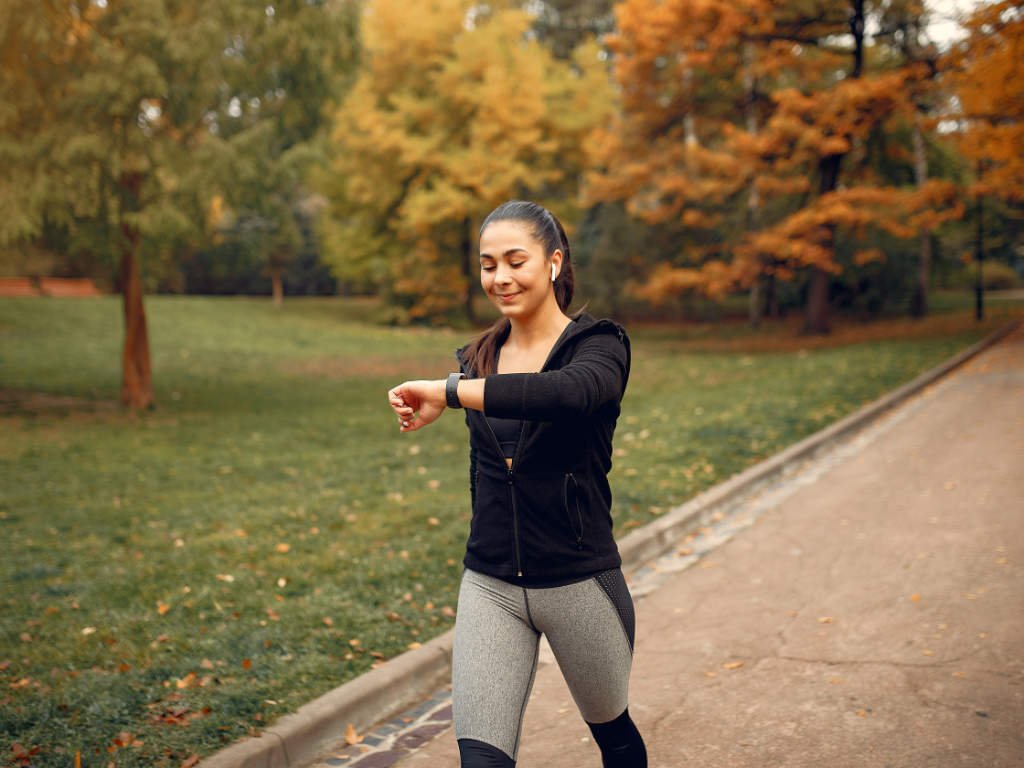Table of Contents
Are you tired of feeling winded after climbing a flight of stairs? Or maybe you’re looking to boost your energy levels and feel more alive throughout the day? Well, you’re not alone—and that’s exactly where cardio workouts come into play. These heart-pumping exercises aren’t just about breaking a sweat; they’re your ticket to a healthier, more energetic version of yourself.
Cardio workouts—also known as cardiovascular or aerobic exercise—are any physical activities that elevate your heart rate and breathing for a sustained period, making them essential not only for enhancing cardiovascular health and stamina but also for providing broad physical and mental health benefits. Think of them as your body’s natural energy booster and stress-buster rolled into one powerful package.
What Exactly Are Cardio Workouts?
Let’s break it down in simple terms. Cardio or aerobic exercise comprises any activity that consistently raises your heart rate—like walking, running, cycling, swimming, and dancing. It’s basically anything that gets your heart beating faster and your lungs working harder than when you’re binge-watching your favorite series on the couch.
The beauty of cardio lies in its versatility. You don’t need fancy equipment or a gym membership to get started. A brisk walk around your neighborhood counts just as much as a high-intensity spin class. The key is getting your body moving in a rhythmic, sustained way that challenges your cardiovascular system.
Understanding Intensity Levels
Not all cardio is created equal, and that’s actually a good thing! There are different intensity levels to match your current fitness level and goals:
Moderate-intensity cardio includes activities like brisk walking or cycling at a steady pace. During these exercises, your heartbeat and breathing increase, but you can still hold a conversation with your workout buddy. It’s that sweet spot where you’re working but not gasping for air.
High-intensity cardio takes things up a notch with exercises like running, HIIT (High-Intensity Interval Training), or fast cycling. These workouts push your heart rate significantly higher and often include short bursts of maximum effort followed by recovery periods. Think of it as your cardiovascular system’s version of interval training—challenging but incredibly effective.
According to the American Heart Association, adults should aim for at least 150 minutes of moderate-intensity aerobic activity or 75 minutes of vigorous-intensity aerobic activity per week. But don’t worry if that sounds overwhelming—you can start small and build up gradually.

The Life-Changing Benefits of Cardio Workouts
Here’s where things get exciting. The benefits of regular cardio go way beyond just looking good in your favorite jeans (though that’s definitely a nice bonus!).
Cardiovascular Health: Your Heart Will Thank You
Your heart is a muscle, and like any muscle, the more you work it, the stronger it becomes. Cardio strengthens your heart and improves blood vessel function, leading to a lower resting heart rate and blood pressure. This translates to a significantly reduced risk of heart disease and stroke.
Research from the Cleveland Clinic shows that regular cardiovascular exercise can lower your risk of heart disease by up to 35%. That’s pretty impressive for something as simple as taking a daily walk or bike ride!
When you engage in regular cardio, your heart becomes more efficient at pumping blood throughout your body. This means it doesn’t have to work as hard during rest periods, which is why fit individuals often have lower resting heart rates.
Stamina & Endurance: Feel Energized All Day Long
Remember when you used to have boundless energy as a kid? Regular cardio trains your heart, lungs, and muscles to handle higher physical demands, resulting in increased energy and improved performance in daily activities.
You’ll notice the difference in everyday tasks—carrying groceries up the stairs, playing with your kids at the park, or even staying alert during those long work meetings. Your body becomes more efficient at delivering oxygen and nutrients to your muscles, which means less fatigue and more stamina throughout your day.
Mental Health: The Natural Mood Booster
Here’s something that might surprise you—cardio can elevate your mood, reduce stress levels, and improve sleep quality. It’s like nature’s own antidepressant! When you exercise, your body releases endorphins, often called “feel-good” hormones, which can help combat anxiety and depression.
Studies published in PMC demonstrate that regular aerobic exercise can be as effective as medication for treating mild to moderate depression. Plus, it lowers the risk of dementia and supports a more resilient mental state as you age.
The stress-busting benefits are real too. After a challenging day, there’s nothing quite like a good cardio session to help you shake off the tension and clear your head. Many people find that their best ideas come during or after a workout—it’s like your brain gets a fresh restart.
Effective Exercise Routines for Every Fitness Level
One of the best things about cardio is that there’s something for everyone, regardless of your current fitness level or experience. Let’s explore some options that can work for you.
Beginner-Friendly Routines
If you’re just starting out, don’t feel like you need to jump into intense workouts right away. Walking at a brisk pace is an excellent starting point—it’s low-impact, accessible, and incredibly effective. Aim for 20-30 minutes of brisk walking, and you’ll be surprised at how good you feel afterward.
Light cycling is another fantastic option for beginners. Whether it’s on a stationary bike at home or a leisurely ride through your neighborhood, cycling is easy on the joints while still providing excellent cardiovascular benefits.
Swimming at a steady rate is perhaps one of the most complete forms of cardio exercise. It works your entire body while being incredibly gentle on your joints. If you have access to a pool, even 20 minutes of steady swimming can provide amazing benefits.

The key for beginners is consistency over intensity. It’s better to do moderate exercise regularly than to go all-out once and then skip the next week because you’re too sore to move!
Intermediate Routines: Stepping It Up
Once you’ve built a solid foundation, it’s time to challenge yourself a bit more. Interval training is a game-changer at this level—try alternating periods of walking and jogging. For example, walk for 2 minutes, then jog for 1 minute, and repeat this cycle for 20-30 minutes.
Cycling with varying speeds is another excellent intermediate option. You might cycle at a moderate pace for 5 minutes, then increase to a faster pace for 2 minutes, then return to moderate. This variation keeps your workout interesting and challenges your cardiovascular system in different ways.
For those interested in exploring more structured fitness programs, check out our guide on fitness journey tips for beginners to help you progress safely and effectively.
Advanced Routines: Ready to Sweat?
If you’re ready to take things to the next level, High-Intensity Interval Training (HIIT) is where the magic happens. These workouts involve short, intense bursts of activity followed by rest or low-intensity periods. A typical HIIT session might last only 15-20 minutes, but it’s incredibly effective for both cardiovascular health and calorie burn.
Cardio circuits involving multiple exercises with minimal rest can push your fitness to new heights. You might combine jumping jacks, burpees, mountain climbers, and high knees into a circuit that keeps your heart rate elevated throughout the entire workout.
For more advanced training techniques, our powerful cardio exercises guide offers comprehensive routines that can transform your fitness level.
Intense Workouts for Advanced Fitness Goals
When you’re ready to push your limits, intense cardio workouts can deliver incredible results in shorter time frames. But remember—with great intensity comes great responsibility for proper form and gradual progression.
High-Impact Exercise Examples
Burpee circuits are among the most challenging yet effective cardio exercises. They combine a squat, plank, push-up, and jump into one fluid movement that works your entire body while sending your heart rate through the roof.
Sprints or repeated hill runs are excellent for building both cardiovascular endurance and leg strength. The explosive nature of these exercises creates an “afterburn effect,” where your body continues burning calories at an elevated rate even after your workout is finished.
Tabata training follows a specific protocol: 20 seconds of maximum effort followed by 10 seconds of rest, repeated for 4 minutes (8 rounds total). It sounds simple, but those 4 minutes will challenge you like never before!
Expected Outcomes and Benefits
These intense workouts maximize calorie burn, rapidly boost stamina, and promote fat loss more efficiently than moderate-intensity exercise. The high intensity creates metabolic changes that can continue benefiting your body for hours after you’ve finished exercising.
However, it’s crucial to approach intense workouts with respect and preparation. Always warm up before intense sessions, listen to your body, and modify exercises for your current level as needed. The goal is to challenge yourself, not to get injured.
How Can You Incorporate Fat-Burning Exercises?
Let’s talk about those exercises that really get your metabolism firing on all cylinders. Fat-burning cardio exercises like jumping jacks, burpees, and mountain climbers are incredibly effective because they engage multiple muscle groups while keeping your heart rate elevated.
Smart Integration Strategies
The beauty of these exercises is their versatility. You can add them to your warm-ups to get your body ready for more intense work, include them in your cool-downs to squeeze out a few extra calories, or incorporate them into HIIT circuits for optimal fat-burning results.
Consider creating a “finisher” circuit at the end of your regular workout—2-3 minutes of jumping jacks, burpees, and mountain climbers can amplify the benefits of your entire session.

Maintaining Long-Term Consistency
Here’s the truth about fitness: consistency beats perfection every single time. Track your progress with fitness journals or apps—seeing your improvements documented can be incredibly motivating. Set realistic goals that challenge you without overwhelming you, and most importantly, vary your routines to stay engaged and excited about your workouts.
For additional support in your fitness journey, explore our comprehensive guide on essential exercises for women’s fitness which complements cardio training beautifully.
What Type of Cardio Burns the Most Calories?
This is probably one of the most common questions I hear, and the answer might surprise you. High-intensity exercises like HIIT, running, and cycling typically burn the most calories per minute. But here’s the thing—the “best” cardio is the one you’ll actually stick with consistently.
Running can burn anywhere from 300-600 calories per hour depending on your weight and pace. Swimming is close behind, burning around 250-500 calories per hour. HIIT workouts can burn 200-400 calories in just 15-30 minutes, plus they create that afterburn effect we talked about earlier.
But don’t discount lower-intensity options! Walking might “only” burn 150-300 calories per hour, but if you can walk for an hour daily and only run twice a week, walking might give you better long-term results.
How Long Should Your Cardio Sessions Be?
The ideal duration depends on your fitness level and goals. Beginners should start with 15-20 minute sessions and gradually work up to 30-45 minutes. More experienced exercisers can benefit from 45-60 minute sessions, especially for moderate-intensity workouts.
For HIIT training, shorter is often better—15-25 minutes of high-intensity work can be more effective than an hour of moderate exercise. The key is matching your workout duration to your intensity level and recovery capacity.
According to Health Direct Australia, the minimum effective dose is about 150 minutes of moderate cardio per week, but you can break this down however works best for your schedule—30 minutes five times a week, or three 50-minute sessions.
What’s the Best Time to Do Cardio?
Honestly, the best time for cardio is whenever you can fit it into your schedule consistently. Some people swear by morning workouts for the energy boost and the satisfaction of getting it done early. Others prefer evening sessions to decompress from the day.
Morning cardio can kickstart your metabolism and give you energy for the entire day. Plus, research suggests you might burn more fat exercising in a fasted state (before breakfast).
Evening cardio can be great for stress relief and can actually help improve sleep quality, contrary to what some people believe. Just try to finish your workout at least 2-3 hours before bedtime.
The most important factor is consistency—pick a time that works with your lifestyle and stick with it.
Should You Do Cardio Before or After Strength Training?
This depends on your primary goals. If your main goal is cardiovascular fitness, do cardio first when you have the most energy. If building muscle is your priority, save cardio for after your strength training.
Many fitness experts recommend doing a brief 5-10 minute cardio warm-up, followed by strength training, then finishing with 15-20 minutes of moderate cardio. This approach gives you the benefits of both without significantly compromising either.
For more detailed guidance on combining different types of exercise, check out our strength training for beginners guide which complements cardio training perfectly.
Can You Do Cardio Every Day?
Yes, you can do cardio every day, but it’s important to vary the intensity and type. Your body needs recovery time, especially after high-intensity sessions. A good approach might be:
- 2-3 days of high-intensity cardio
- 2-3 days of moderate-intensity cardio
- 1-2 days of light activity (like walking) or complete rest
Listen to your body—if you’re feeling exhausted, experiencing joint pain, or your performance is declining, it’s time for a rest day. Remember, recovery is when your body actually adapts and gets stronger.

Frequently Asked Questions
What counts as cardio exercise?
Any activity that raises your heart rate and breathing for a sustained period counts as cardio. This includes walking, running, cycling, swimming, dancing, jumping rope, and even activities like gardening or playing with your kids at the park.
How do I know if my cardio workout is effective?
You should feel slightly out of breath but still able to speak in short sentences during moderate-intensity cardio. For vigorous cardio, you should only be able to say a few words at a time. Using a heart rate monitor can give you more precise feedback about your workout intensity.
Is it normal to feel tired after starting a cardio routine?
Yes, it’s completely normal to feel tired when you start a new exercise routine. Your body is adapting to new demands. However, after 2-3 weeks of consistent exercise, you should start feeling more energetic overall. If fatigue persists, consider whether you’re doing too much too soon.
Can cardio help with weight loss?
Absolutely! Cardio burns calories during your workout and can boost your metabolism for hours afterward. Combined with a healthy diet, regular cardio is one of the most effective tools for sustainable weight loss. For additional support, explore our guide on natural weight loss supplements.
What should I eat before and after cardio?
Before cardio, eat something light if you’re hungry—a banana or small handful of nuts work well. After your workout, focus on protein and carbohydrates to help with recovery. A protein shake with fruit or Greek yogurt with berries are excellent options.
Supporting Your Cardio Journey with Proper Nutrition
Your cardio workouts will be much more effective when supported by proper nutrition. Staying hydrated is crucial—aim to drink water before, during, and after your workouts. For longer sessions (over an hour), consider drinks that replace electrolytes.
Pre-workout nutrition should provide easily digestible energy. Think fruits, a small amount of oats, or a light smoothie 30-60 minutes before exercising. Post-workout nutrition should focus on recovery—protein to repair muscles and carbohydrates to replenish energy stores.
For comprehensive nutrition guidance to support your fitness goals, check out our diet for fitness goals guide, which perfectly complements your cardio routine.
Making Cardio a Lifestyle, Not a Chore
The secret to long-term success with cardio isn’t finding the “perfect” workout—it’s finding activities you genuinely enjoy. If you hate running, don’t run! Try dancing, hiking, swimming, or playing recreational sports instead.
Variety is your friend. Mix up your routines to prevent boredom and work different muscle groups. One day might be a bike ride, the next could be a dance class, and the third might be a brisk walk while listening to your favorite podcast.
Set process goals, not just outcome goals. Instead of only focusing on losing 20 pounds, set goals like “walk 30 minutes five times this week” or “try one new cardio activity this month.” These process goals are more within your control and are more likely to lead to long-term success.
Consider finding a workout buddy or joining group classes. Social support can make exercise more enjoyable and can help you stay accountable on days when motivation is low.
Cardio workouts are among the most effective strategies to enhance heart health, build stamina, support weight goals, and improve overall quality of life. The beauty of cardiovascular exercise lies in its accessibility—whether you’re just starting your fitness journey or you’re an experienced athlete looking to add variety to your routine, there’s a form of cardio that’s perfect for you.
Remember, the journey to better health isn’t about perfection; it’s about consistency and gradual improvement. Start where you are, use what you have, and do what you can. Your body—and your mind—will thank you for every step, pedal stroke, and heartbeat along the way.
The most important step is the first one. Whether that’s a 10-minute walk around your neighborhood or signing up for that dance class you’ve been thinking about, take action today. Your future self is counting on you to make that move toward a healthier, more energetic life.
Ready to transform your health through cardio? Start with just 15 minutes today—your heart will thank you, your energy levels will soar, and you’ll be amazed at how quickly you begin to see and feel the difference. What type of cardio sounds most appealing to you right now?


